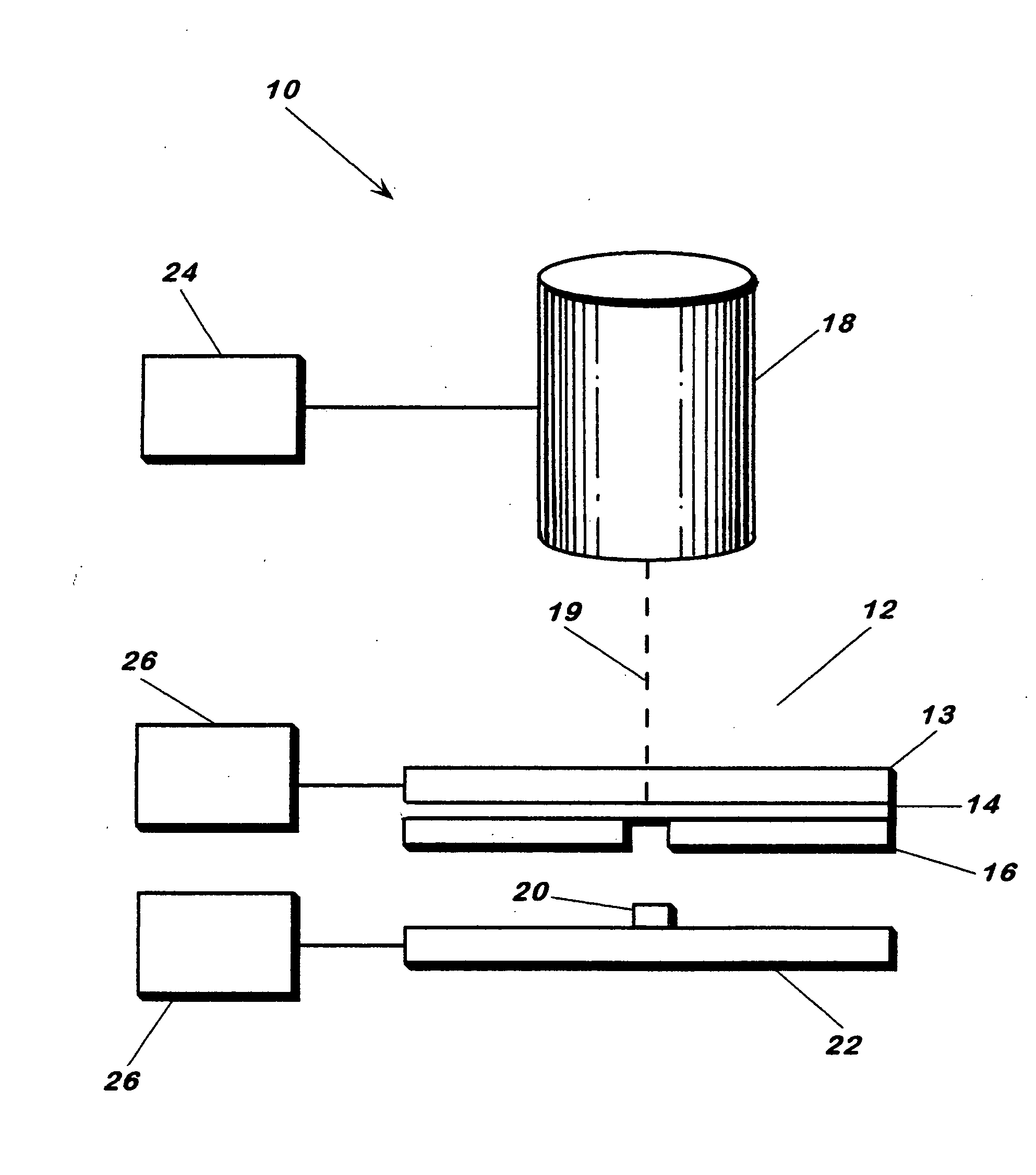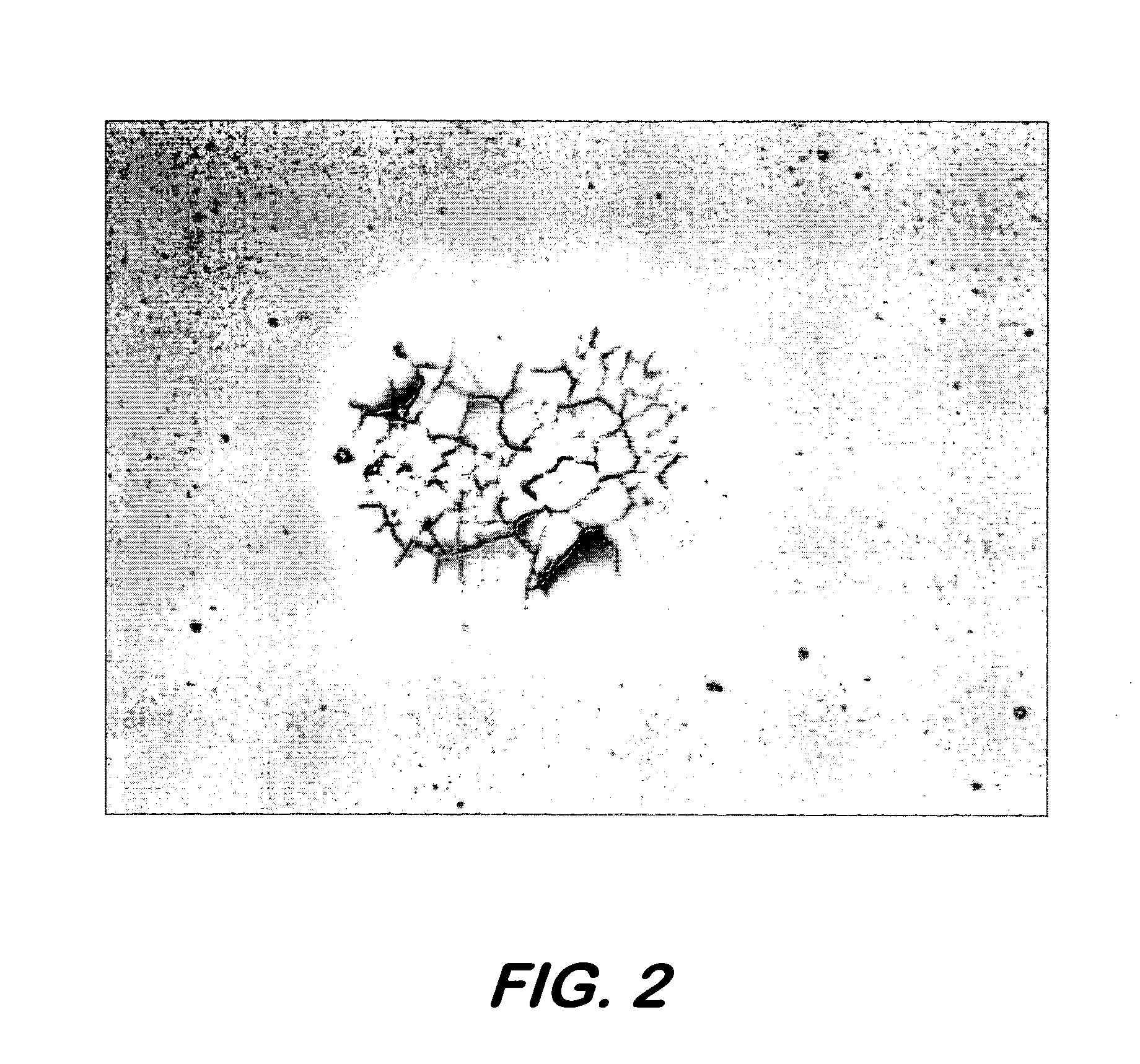Biological laser printing for tissue microdissection via indirect photon-biomaterial interactions
a biomaterial and laser printing technology, applied in vacuum evaporation coating, microwave heating, packaging goods types, etc., can solve the problems of limited application or inherent limitations of the dw, low reproducibility of the technique, and low absorption of certain matrix materials
- Summary
- Abstract
- Description
- Claims
- Application Information
AI Technical Summary
Problems solved by technology
Method used
Image
Examples
Embodiment Construction
[0019] The primary use of this invention is the isolation, removal, and procurement of specific and defined populations of cells directly from complex histopathologically processed tissue / cells from any organism, as for example the removal of diseased cells from a mixture of diseased and normal cells within a complex tissue derived from formalin fixed mammalian tissue. Once isolated the cells can be used to procure specified biomolecules where each type of biomolecule can be assayed so that the results of such biochemical assays can be correlated directly to the type of cell that was procured by this invention. Therefore the primary implication of this invention is to provide an advanced method to aid in directly correlating changes in biomolecules with diseased cells and the disease processes in which those changes are involved.
[0020] The present invention relates to a tissue microdissection process that utilizes a conductive or semi-conductive, photon-absorbing, interfacial coatin...
PUM
| Property | Measurement | Unit |
|---|---|---|
| Fraction | aaaaa | aaaaa |
| Thickness | aaaaa | aaaaa |
| Thickness | aaaaa | aaaaa |
Abstract
Description
Claims
Application Information
 Login to View More
Login to View More - R&D
- Intellectual Property
- Life Sciences
- Materials
- Tech Scout
- Unparalleled Data Quality
- Higher Quality Content
- 60% Fewer Hallucinations
Browse by: Latest US Patents, China's latest patents, Technical Efficacy Thesaurus, Application Domain, Technology Topic, Popular Technical Reports.
© 2025 PatSnap. All rights reserved.Legal|Privacy policy|Modern Slavery Act Transparency Statement|Sitemap|About US| Contact US: help@patsnap.com



